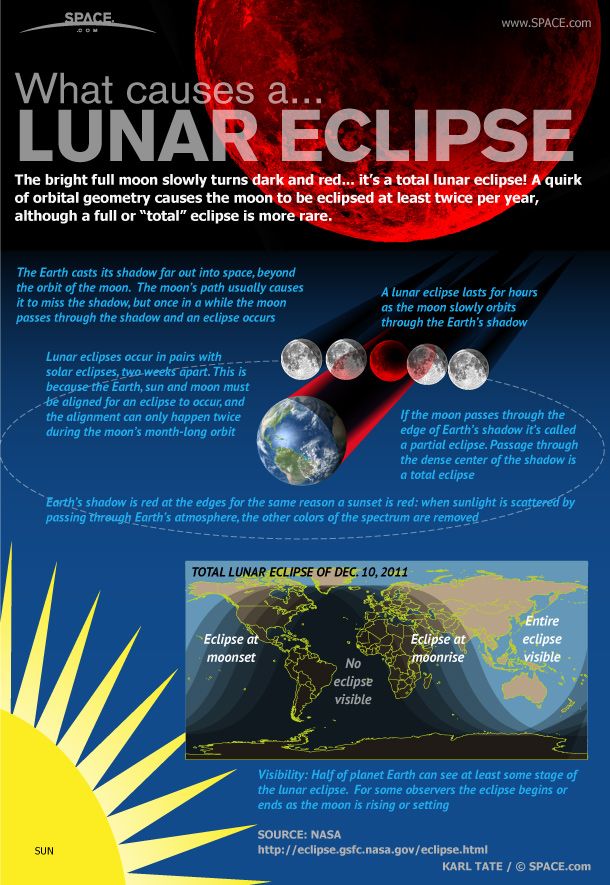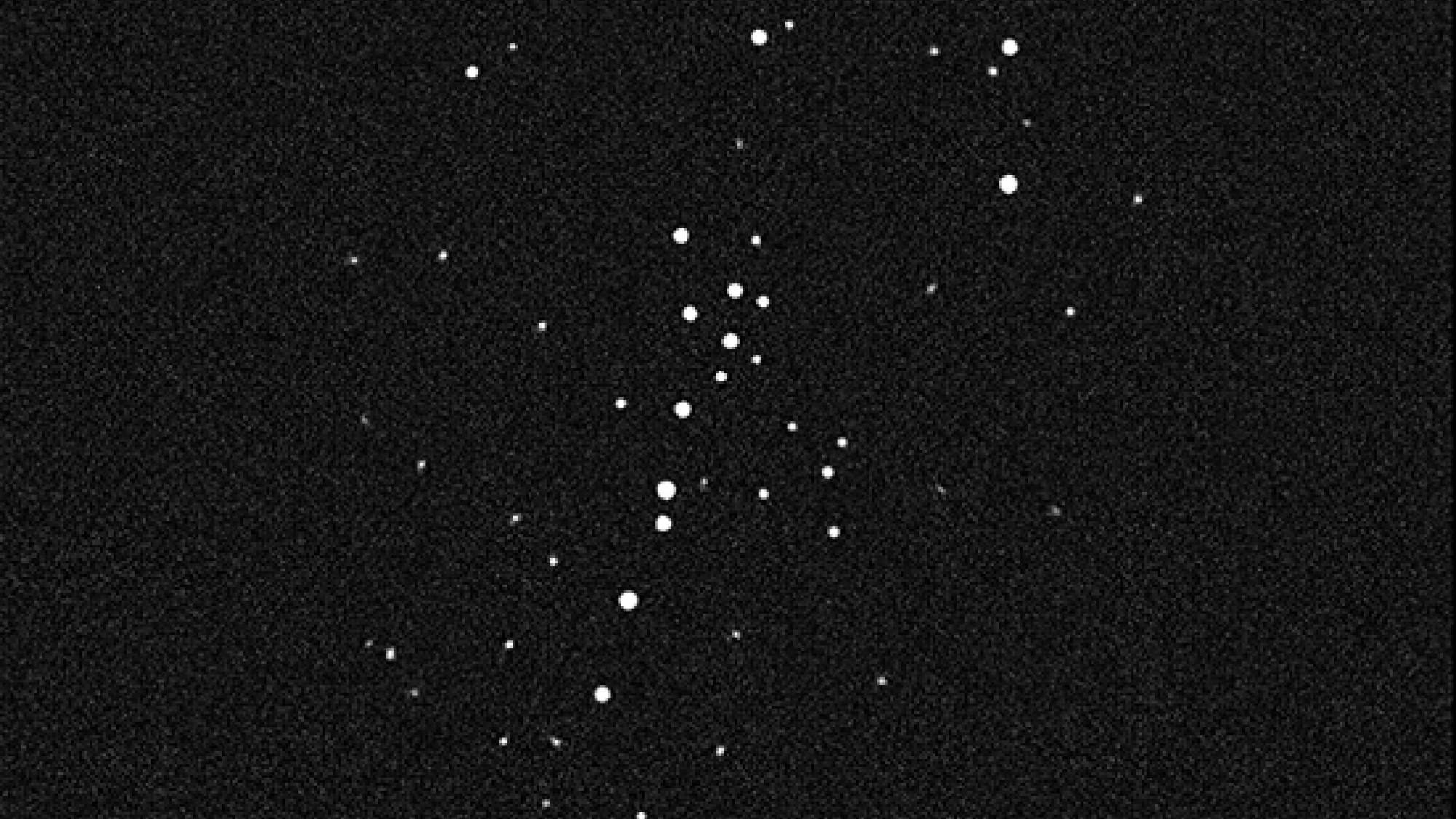How lunar eclipses work (infographic)

There are three types of lunar eclipses — total, partial and penumbral — with the most dramatic being a total lunar eclipse, in which Earth's shadow completely covers the moon.
Here's how it works: Earth casts two shadows that fall on the moon during a lunar eclipse: The umbra is a full, dark shadow. The penumbra is a partial outer shadow. The moon passes through these shadows in stages. When the moon is in the penumbral shadow, the eclipse is not so noticeable. But when the moon is in the umbral shadow, the apparent change in color is far more dramatic.
Editor's note: If you capture an amazing lunar eclipse photo and would like to share it with Space.com for a story or gallery, send images and comments to managing editor Tariq Malik at spacephotos@space.com.
- Lunar eclipse guide: When, where & how to see them
- Eclipse glossary: Solar eclipses, lunar eclipses and their terms
- Under a Blood Moon: A look at famous lunar eclipses in history
- Longest lunar eclipse of the century dazzles skywatchers
Follow us on Twitter @Spacedotcom, on Facebook and Instagram.
OFFER: Save 45% on 'All About Space' 'How it Works' and 'All About History'!
For a limited time, you can take out a digital subscription to any of our best-selling science magazines for just $2.38 per month, or 45% off the standard price for the first three months.
Breaking space news, the latest updates on rocket launches, skywatching events and more!
Join our Space Forums to keep talking space on the latest missions, night sky and more! And if you have a news tip, correction or comment, let us know at: community@space.com.

Karl's association with Space.com goes back to 2000, when he was hired to produce interactive Flash graphics. From 2010 to 2016, Karl worked as an infographics specialist across all editorial properties of Purch (formerly known as TechMediaNetwork). Before joining Space.com, Karl spent 11 years at the New York headquarters of The Associated Press, creating news graphics for use around the world in newspapers and on the web. He has a degree in graphic design from Louisiana State University and now works as a freelance graphic designer in New York City.

